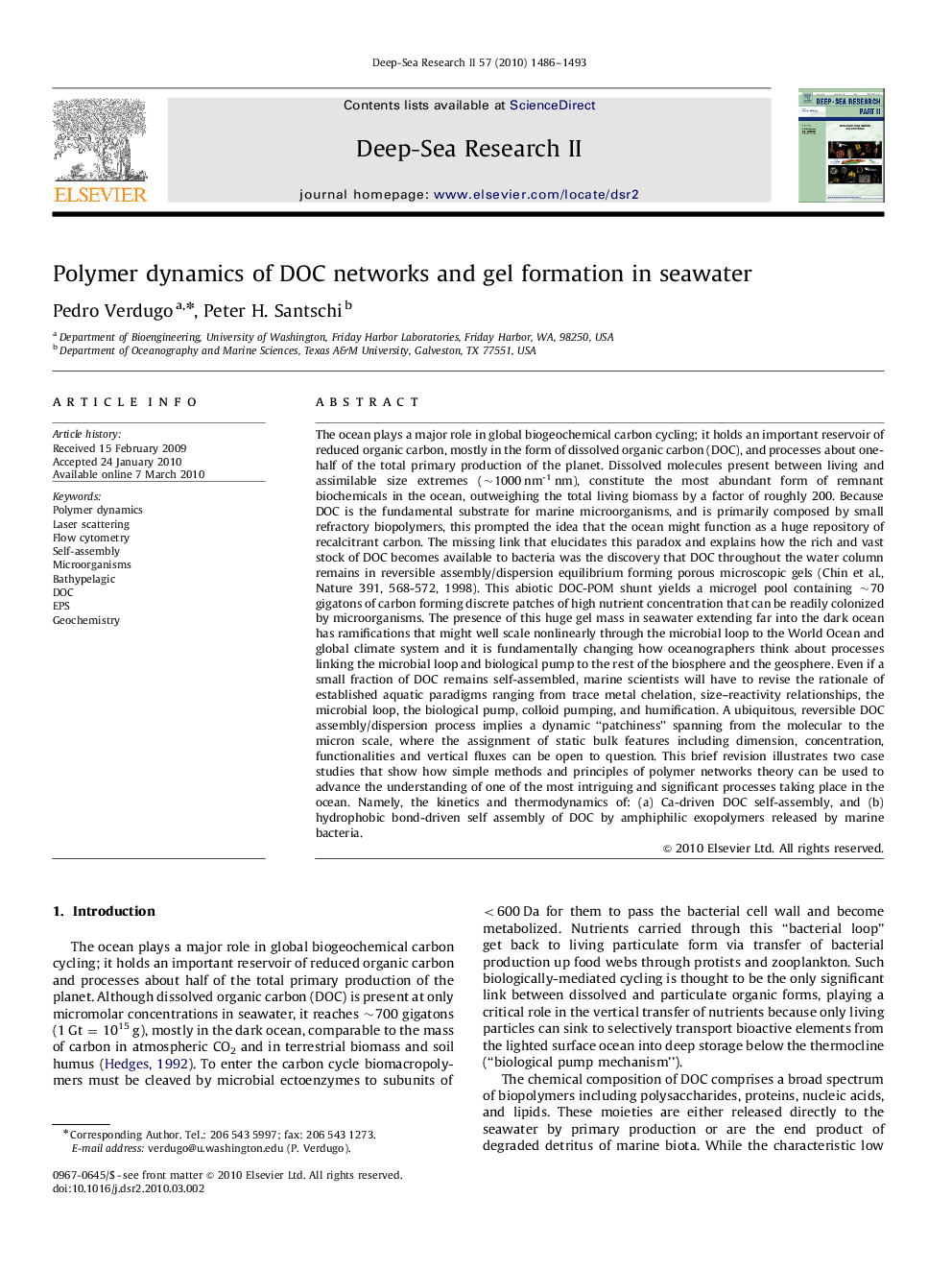| کد مقاله | کد نشریه | سال انتشار | مقاله انگلیسی | نسخه تمام متن |
|---|---|---|---|---|
| 4537025 | 1326347 | 2010 | 8 صفحه PDF | دانلود رایگان |

The ocean plays a major role in global biogeochemical carbon cycling; it holds an important reservoir of reduced organic carbon, mostly in the form of dissolved organic carbon (DOC), and processes about one-half of the total primary production of the planet. Dissolved molecules present between living and assimilable size extremes (∼1000 nm-1 nm), constitute the most abundant form of remnant biochemicals in the ocean, outweighing the total living biomass by a factor of roughly 200. Because DOC is the fundamental substrate for marine microorganisms, and is primarily composed by small refractory biopolymers, this prompted the idea that the ocean might function as a huge repository of recalcitrant carbon. The missing link that elucidates this paradox and explains how the rich and vast stock of DOC becomes available to bacteria was the discovery that DOC throughout the water column remains in reversible assembly/dispersion equilibrium forming porous microscopic gels (Chin et al., Nature 391, 568-572, 1998). This abiotic DOC-POM shunt yields a microgel pool containing ∼70 gigatons of carbon forming discrete patches of high nutrient concentration that can be readily colonized by microorganisms. The presence of this huge gel mass in seawater extending far into the dark ocean has ramifications that might well scale nonlinearly through the microbial loop to the World Ocean and global climate system and it is fundamentally changing how oceanographers think about processes linking the microbial loop and biological pump to the rest of the biosphere and the geosphere. Even if a small fraction of DOC remains self-assembled, marine scientists will have to revise the rationale of established aquatic paradigms ranging from trace metal chelation, size–reactivity relationships, the microbial loop, the biological pump, colloid pumping, and humification. A ubiquitous, reversible DOC assembly/dispersion process implies a dynamic “patchiness” spanning from the molecular to the micron scale, where the assignment of static bulk features including dimension, concentration, functionalities and vertical fluxes can be open to question. This brief revision illustrates two case studies that show how simple methods and principles of polymer networks theory can be used to advance the understanding of one of the most intriguing and significant processes taking place in the ocean. Namely, the kinetics and thermodynamics of: (a) Ca-driven DOC self-assembly, and (b) hydrophobic bond-driven self assembly of DOC by amphiphilic exopolymers released by marine bacteria.
Journal: Deep Sea Research Part II: Topical Studies in Oceanography - Volume 57, Issue 16, 15 August 2010, Pages 1486–1493